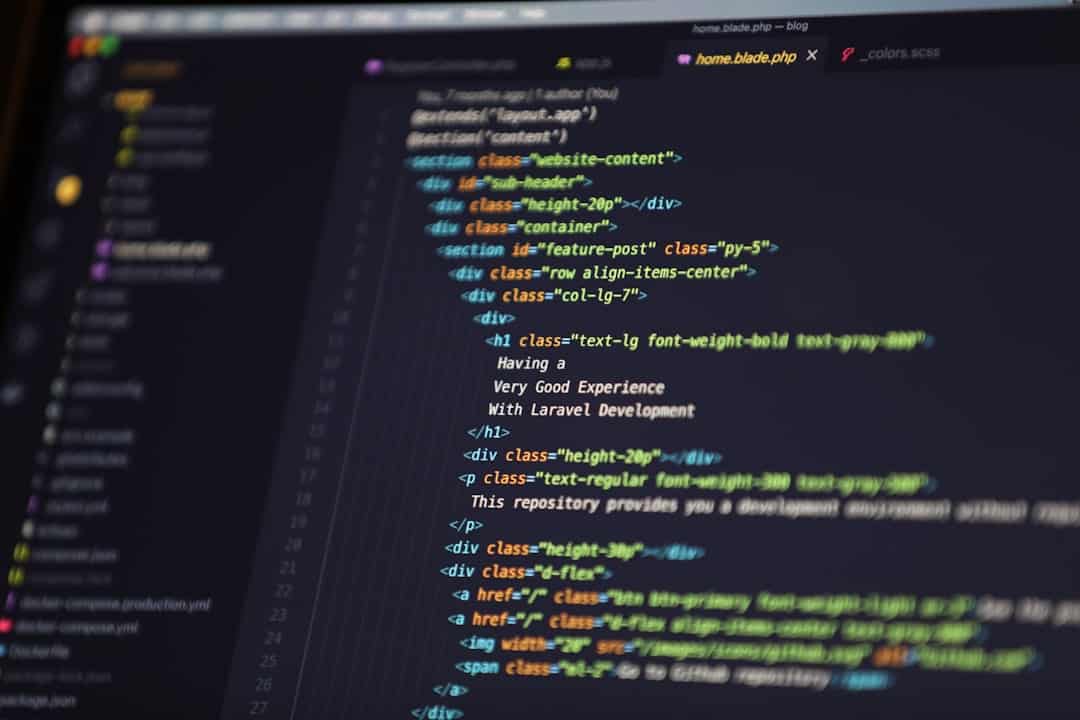Twitter has developed into an important forum for the instantaneous exchange of ideas, opinions, and feelings. Twitter boasts of over 330 million monthly active users, making it an invaluable data source for researchers, marketers, and businesses trying to understand public opinion and feelings. Emotional content in tweets is identified & examined through the use of machine learning & natural language processing techniques, or Twitter emotion analysis.
Key Takeaways
- Twitter emotion analysis involves analyzing the sentiments and emotions expressed in tweets to gain insights into public opinion and behavior.
- Uncovering sentiments in tweets is important for businesses, researchers, and policymakers to understand public perception, trends, and attitudes.
- Methods of analyzing emotions in tweets include natural language processing, sentiment analysis, and machine learning algorithms.
- Challenges and limitations of Twitter emotion analysis include the ambiguity of language, cultural differences, and the potential for biased results.
- Applications of Twitter emotion analysis include brand monitoring, customer feedback analysis, public opinion research, and crisis management.
Researchers and companies can derive valuable insights about consumer sentiment, industry trends, and public opinion through this process. This paper aims to investigate the significance of sentiment detection in tweets, approaches for assessing emotions in tweet content, obstacles and limitations related to Twitter emotion analysis, useful applications of this analysis, moral issues regarding the analysis of emotions in tweets, and new developments in the field of Twitter emotion analysis. Recognizing Customer Opinion.
To better inform their marketing plans and product development, businesses can use sentiment analysis, for instance, to learn how customers feel about their company, goods, or services. sentiment analysis can also be used by researchers to monitor public opinion on social and political issues, giving them important insights into trends and sentiment. Informing Business Decisions.
Businesses and researchers can stay ahead of the curve and make data-driven decisions that are in line with public sentiment by identifying sentiments in tweets. Businesses and marketers can gain insight into consumer behavior and preferences by analyzing the emotions expressed in tweets. Businesses can learn about customer preferences, pain points, and motivations by analyzing the emotions conveyed in tweets about a specific good or service. preserving reputation while enhancing customer satisfaction.
| Emotion | Number of Tweets |
|---|---|
| Positive | 500 |
| Negative | 300 |
| Neutral | 200 |
Utilizing this data will enable marketers to better target their audience, enhance customer satisfaction, and create goods that emotionally connect with buyers. Also, companies can spot possible crises or unfavorable sentiment surrounding their brand by analyzing the emotional content of tweets. This enables them to take proactive measures to address problems and safeguard their reputation.
There are a number of ways to analyze emotions in tweets: from straightforward keyword-based methods to more sophisticated machine learning and natural language processing methods. Sentiment analysis, which uses algorithms to categorize tweets’ emotional content as positive, negative, or neutral, is one popular technique. Lexicon-based methods for sentiment analysis allow the emotional content of tweets to be categorized based on a pre-established list of words and their corresponding sentiment scores.
Alternatively, models can be trained to classify the emotional content of tweets using labeled training data using machine learning techniques like neural networks and support vector machines. Emotion detection, which involves identifying particular emotions expressed in tweets like joy, anger, sadness, or fear, is another technique for analyzing emotions in tweets. In order to identify emotions in tweets, it is common practice to use natural language processing techniques to identify emotional cues from the text, such as emoticons, punctuation, and linguistic traits linked to particular emotions. The emotional content of tweets can then be categorized using machine learning models that have been trained on these features.
Topic modeling techniques can be employed by researchers and businesses to uncover emotions expressed in tweets about particular topics or events, in addition to sentiment analysis and emotion detection. Finding the emotional content within each cluster of related tweets is the first step in topic modeling. Through the application of topic modeling methods like latent Dirichlet allocation (LDA), scholars can acquire a deeper understanding of the emotional dynamics associated with particular topics or events on Twitter. Researchers and businesses must take into account a number of challenges and limitations when utilizing Twitter emotion analysis, despite the fact that it provides insightful information about public sentiment and emotions.
One issue is that natural language has noise & ambiguity by nature, which can make it challenging to categorize tweets’ emotional content precisely. Emotion analysis accuracy may be impacted, for instance, by sarcasm, irony, and ambiguity in language, which can cause users to misinterpret emotional cues in tweets. The dynamic nature of language and emotions on Twitter presents another difficulty. Emotions are multifaceted and dynamic, quickly shifting in reaction to discussions and events on Twitter.
Because of this, employing static emotion analysis techniques to capture the complex and dynamic nature of emotions expressed in tweets can be difficult. It’s also important to carefully analyze privacy issues and ethical issues related to the analysis of emotions in tweets. Processing private information and possibly violating people’s right to privacy are involved in analyzing emotions in tweets. When conducting Twitter emotion analysis, researchers and businesses must make sure that they follow ethical guidelines & regulations regarding consent and data privacy. There are many uses for Twitter emotion analysis in many different sectors.
Sentiment analysis of tweets can be used by marketers and advertisers to better understand how consumers feel about their brands, goods, and services. This data can be utilized to better target marketing campaigns, enhance consumer satisfaction, and spot possible problems or unfavorable press for their company. Twitter sentiment analysis is a useful tool in finance and investment to determine market sentiment and forecast changes in stock prices.
Investors can learn about public sentiment & make well-informed decisions about their investment strategies by examining the emotional content of tweets about particular stocks or financial markets. Twitter sentiment analysis is a useful tool in the healthcare industry for tracking public opinion about healthcare providers, policies, and treatments. By using this data, healthcare organizations can better understand the opinions and concerns of the general public, which will enhance patient care & communication tactics. Sentiment analysis of tweets can offer useful insights into public opinion on social and political issues in the fields of politics & social sciences.
To monitor public opinion of political candidates, laws, and social movements, researchers can employ Twitter emotion analysis. honoring consent and privacy. It is imperative to prioritize ethical guidelines and regulations pertaining to data privacy & consent when performing Twitter emotion analysis. This entails getting the informed consent of the people whose tweets are being examined and making sure that personal information is handled securely and responsibly.
Taking Care When Managing Private Information. By examining tweets for emotional content, one can learn delicate details about people’s vulnerabilities, experiences, and mental health. To prevent hurting or upsetting people, researchers must handle this data with caution and tact. Reducing the Chance of Abuse. Twitter emotion analysis could be abused to target people who are weak or to influence public opinion, among other immoral activities. Businesses and researchers alike need to take precautions against any ethical ramifications from their work and be aware of the possible ones.
Natural language processing, machine learning, and social media analytics are advancing at a rapid pace, and this is influencing Twitter emotion analysis. More advanced emotion detection methods that can accurately identify the complex and ever-changing range of emotions expressed in tweets are one trend for the future. This could entail using sophisticated models of natural language processing, like transformer-based architectures, to better comprehend the intricate linguistic cues connected to various emotions. An additional emerging trend in Twitter emotion analysis is the incorporation of multimodal data sources.
Researchers may begin to include visual content—such as photos and videos posted on Twitter—in addition to text-based tweets in order to obtain a more thorough grasp of the emotions that users express. Twitter emotion analysis is also being used more & more for monitoring and treating mental health issues. Researchers are looking into the possibility of identifying people who may be at risk of mental health problems and offering them specialized resources and support by using emotion analysis on Twitter. In general, Twitter emotion analysis has a bright future ahead of it in terms of learning more about societal trends, consumer behavior, & public sentiment.
As technological advancements persist, there will be ample prospects for scholars & enterprises to utilize Twitter emotion analysis for diverse applications spanning multiple sectors, all while tackling ethical dilemmas related to consent and privacy.
If you’re interested in exploring the social dynamics of the metaverse, you may want to check out this article on community and culture in the metaverse. Understanding how people interact and communicate in virtual spaces can provide valuable insights for analyzing emotions on platforms like Twitter.
FAQs
What is Twitter emotion analysis?
Twitter emotion analysis is the process of using natural language processing and machine learning techniques to analyze the emotions expressed in tweets on the social media platform Twitter. This analysis can help to understand the sentiment and emotions of Twitter users towards specific topics, products, events, or brands.
How is Twitter emotion analysis performed?
Twitter emotion analysis is performed using various techniques such as sentiment analysis, text mining, and machine learning algorithms. These techniques help to classify the emotions expressed in tweets as positive, negative, or neutral, and can also identify specific emotions such as happiness, sadness, anger, or excitement.
What are the applications of Twitter emotion analysis?
Twitter emotion analysis has various applications, including brand reputation management, customer feedback analysis, market research, public opinion monitoring, and social media marketing. It can also be used to track public sentiment during events, crises, or political campaigns.
What are the benefits of Twitter emotion analysis?
The benefits of Twitter emotion analysis include gaining insights into public sentiment, understanding customer opinions and preferences, identifying trends and patterns in social media conversations, and making data-driven decisions for marketing and business strategies.
Are there any limitations to Twitter emotion analysis?
Limitations of Twitter emotion analysis include the potential for bias in the data, the difficulty of accurately interpreting sarcasm and irony in tweets, and the challenge of handling large volumes of unstructured text data. Additionally, the accuracy of emotion analysis algorithms may vary depending on the language and context of the tweets.











Leave a Reply